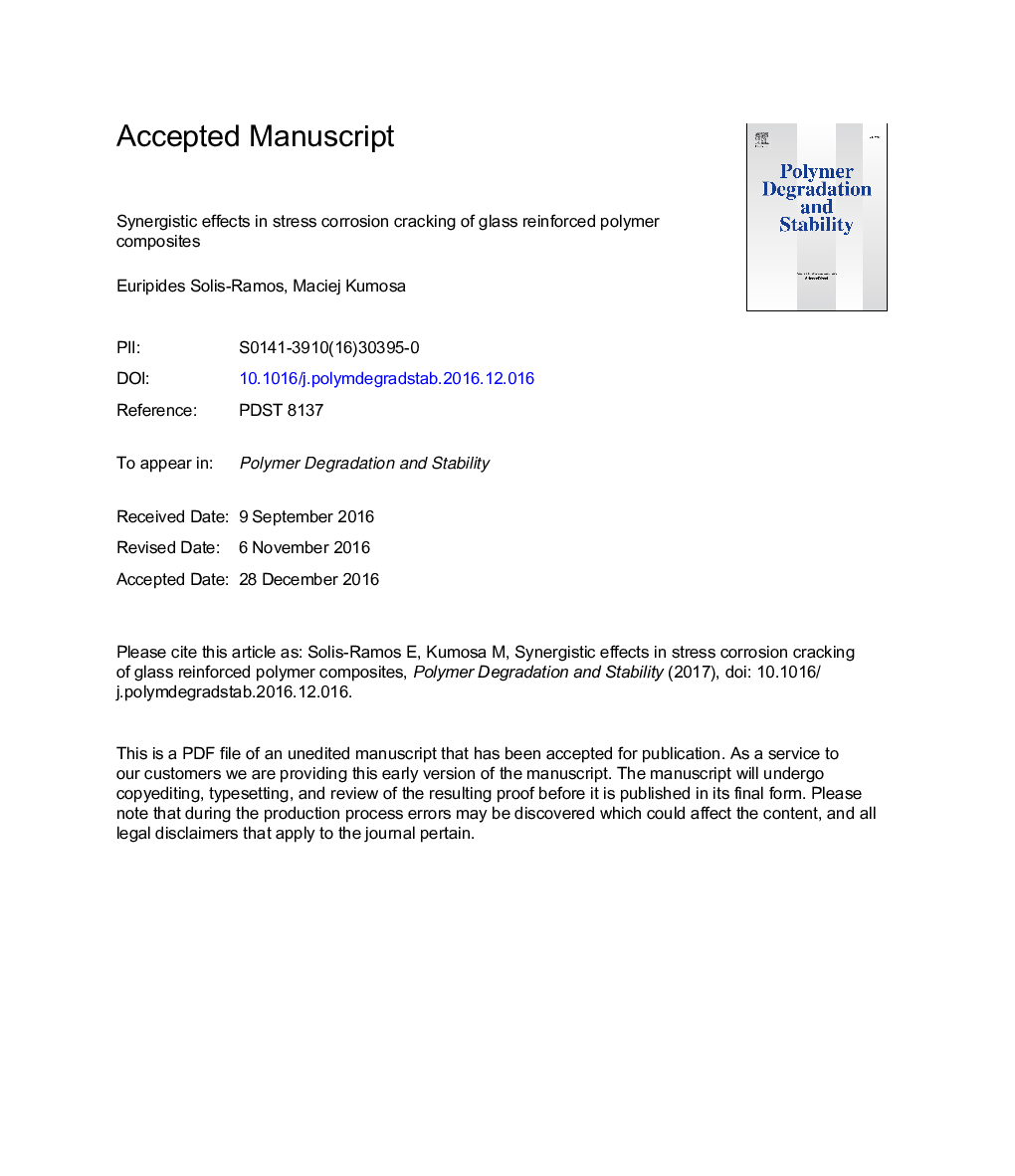| Article ID | Journal | Published Year | Pages | File Type |
|---|---|---|---|---|
| 5200938 | Polymer Degradation and Stability | 2017 | 35 Pages |
Abstract
Synergistic effects of nitric acid exposure, elevated temperature, applied flexural stress and time were examined in the Stress Corrosion Cracking (SCC) of widely used unidirectional Glass Reinforced Polymer (GRP) composites. The composites were composed of two different E-CR glass fibers with a vinylester-epoxy resin as the matrix with E-glass fibers in the same matrix used for a baseline comparison. SCC damage, as measured by the number of fiber cracks, amount of metallic ion leaching from the fibers, and the reduction of residual flexural strength and stiffness properties of the composites, affected the composites differently depending on their composition. As expected, the E-CR composites greatly outperformed the E-glass composites under all conditions. Long term exposure of the E-CR composites did not greatly increase the amount of stress corrosion fiber damage; instead, interface issues and matrix decomposition led to reduced mechanical properties over extended periods of time. The synergistic effect of the combined testing conditions was found to be much stronger in the E-glass than the E-CR glass composites.
Related Topics
Physical Sciences and Engineering
Chemistry
Organic Chemistry
Authors
Euripides Solis-Ramos, Maciej Kumosa,
